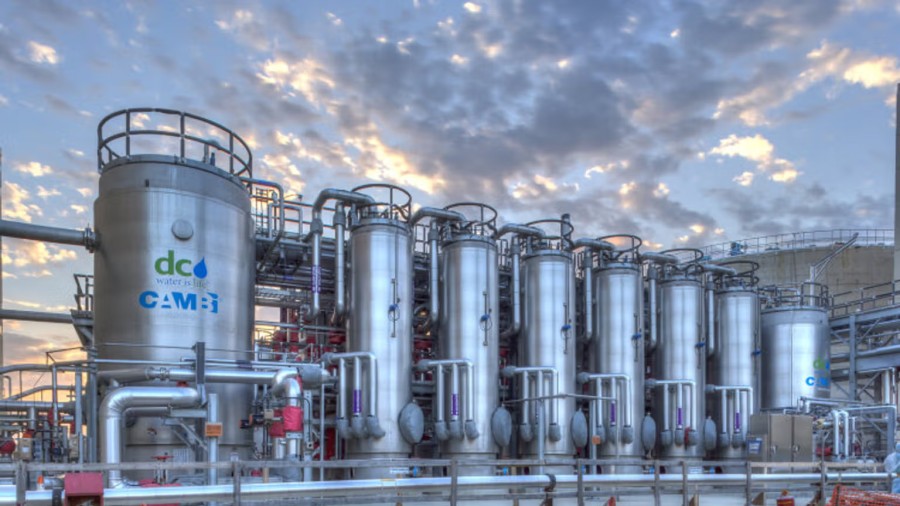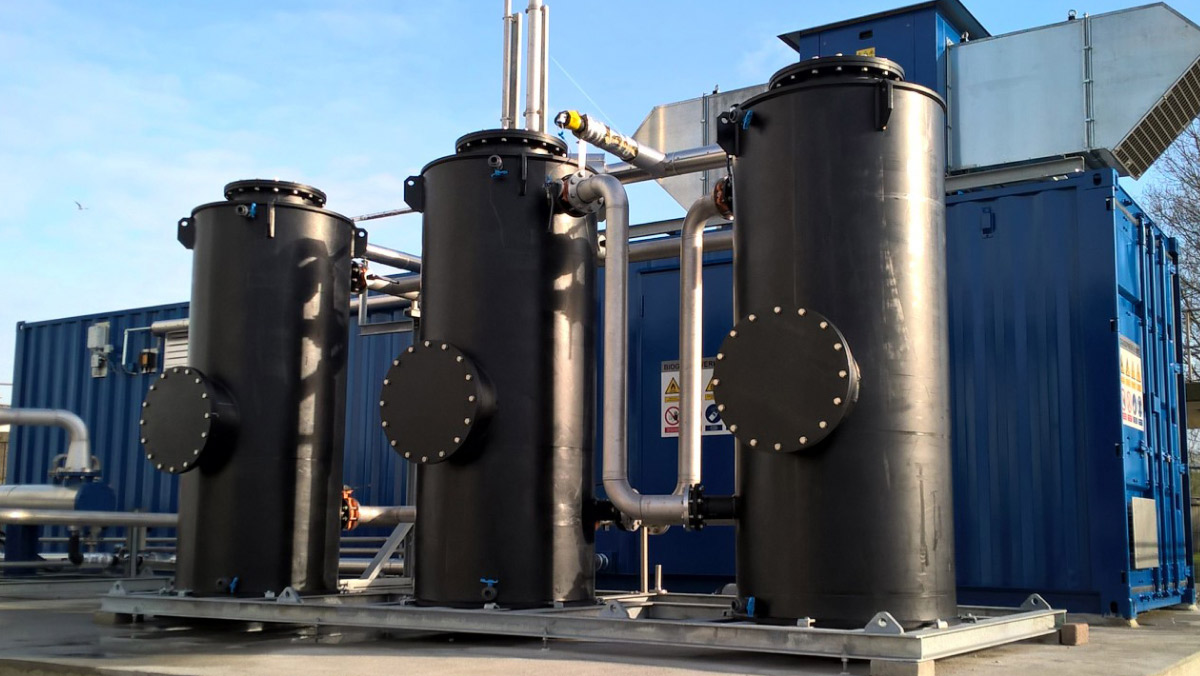 Our Primary Focus is on the extraction of Bio-Methane, typically using Thermo-Hydrolysis for maximum yields. However, Sewage sludge in today's modern cities, contains a great many other pollutants - the bio-gases themselves are a combination of methane (CH4), Carbon Dioxide (CO2), Hydrogen Sulphide (H2S), Ammonia and other gases. But the Sewage Sludge aslo contains the "forever chemicals" now prevalent within the modern 'societies' flouro-carbons - which are very difficult to treat - but not impossible. The scourge of PFAS pollutants;
Our Primary Focus is on the extraction of Bio-Methane, typically using Thermo-Hydrolysis for maximum yields. However, Sewage sludge in today's modern cities, contains a great many other pollutants - the bio-gases themselves are a combination of methane (CH4), Carbon Dioxide (CO2), Hydrogen Sulphide (H2S), Ammonia and other gases. But the Sewage Sludge aslo contains the "forever chemicals" now prevalent within the modern 'societies' flouro-carbons - which are very difficult to treat - but not impossible. The scourge of PFAS pollutants;
It was the raising of this issue with an invitation to speak at PFAS Treatment Summit 2026 in Orange County, California that prompted us to rethink this issue and to research alternatives to the 'usual' incineration methods. Indeed new research suggests - See below;
Thermal hydrolysis has limited effectiveness against PFAS in sewage sludge, and may actually worsen certain aspects of the problem. This was our standard approach;
What Happens During Thermal Hydrolysis
Thermal hydrolysis typically operates at 150-180°C and 6-8 bar pressure for 20-30 minutes. These conditions are far below what's needed to break PFAS's extremely strong carbon-fluorine bonds, which require temperatures exceeding 1000°C for complete destruction.
Effects on PFAS
Minimal destruction: The process doesn't destroy PFAS molecules. The C-F bond energy (~485 kJ/mol) is among the strongest in organic chemistry, making these compounds remarkably stable at thermal hydrolysis temperatures.
Potential transformation: Some longer-chain PFAS precursors may partially degrade into shorter-chain PFAS compounds, but this doesn't eliminate the contamination—it just changes its form.
Increased bioavailability: By breaking down the sludge matrix and solubilizing organic matter, thermal hydrolysis can actually release PFAS that were bound to solids, making them more mobile and potentially increasing their concentration in the liquid phase.
Concentration in biosolids: Since PFAS aren't destroyed, they remain in the treated sludge. If the sludge is subsequently applied to land, PFAS contamination persists.
Implications
This is a significant concern for wastewater treatment facilities using thermal hydrolysis as a pre-treatment for anaerobic digestion. The process improves biogas yield and pathogen reduction but doesn't address PFAS contamination. Facilities dealing with PFAS-contaminated sludge need additional treatment technologies—such as high-temperature incineration (>1100°C), supercritical water oxidation, or electrochemical methods—to actually destroy these persistent pollutants.
 However - incineration is rarely the best option from an environmental perspective - therefore we took a look at the current research: Separation-based approaches are promising and often more environmentally sound than incineration. Here are the main methods being developed and used:
However - incineration is rarely the best option from an environmental perspective - therefore we took a look at the current research: Separation-based approaches are promising and often more environmentally sound than incineration. Here are the main methods being developed and used:
Absorption Technologies
Granular activated carbon (GAC) and ion exchange resins can capture PFAS from the liquid fraction of sludge. These work well for removing PFAS from water but create a concentrated waste stream that still requires disposal or regeneration. Newer specialized resins designed specifically for PFAS show higher selectivity and capacity than traditional materials.
Biochar derived from organic waste is emerging as a lower-cost alternative to activated carbon, with some formulations showing good PFAS binding capacity.
Foam Fractionation
This exploits PFAS's surfactant properties. By bubbling air through contaminated water, PFAS molecules migrate to the air-water interface and concentrate in the foam, which is then collected. This can achieve concentration factors of 100-1000x, dramatically reducing the volume of contaminated material. It's particularly effective for longer-chain PFAS and works at ambient temperatures with minimal energy input.
Membrane Separation
Nanofiltration and reverse osmosis can reject PFAS molecules, concentrating them in a smaller retentate stream. High-pressure membrane systems achieve 90-99% rejection rates for most PFAS compounds. The challenge is membrane fouling from sludge components and managing the concentrated waste.
Electrochemical Separation
Electrodialysis and capacitive deionization can separate charged PFAS compounds. These methods use electric fields to drive PFAS migration, concentrating them for subsequent treatment or recovery.
The Concentration Challenge
All separation methods produce a concentrated PFAS waste stream. The environmental advantage is that you're dealing with a much smaller volume—potentially enabling more controlled destruction methods like electrochemical oxidation, sonochemical degradation, or photocatalytic breakdown that would be impractical at full sludge volumes. Some researchers are also exploring PFAS recovery and recycling for industrial reuse, turning a waste problem into a resource, though this remains largely experimental.
The most sustainable approach likely combines foam fractionation or adsorption for initial concentration, followed by a targeted destruction technology for the smaller concentrated stream.
From the PFAS Summit in Europe recently: Europe PFAS Summit Took place 28-29th July this year
"The complex and costly removal of PFAS arises from their resistance to standard methods, placing a significant burden on utilities to upgrade their processes. Advanced treatment techniques, such as activated carbon, ion exchange, and membranes, combined with robust monitoring, enable effective management and regulatory compliance."
Their agenda was most enlightening Agenda perhaps some should consider the April 1st and 2nd in Orange County to see the latest methonds REGISTER or REVIEW
